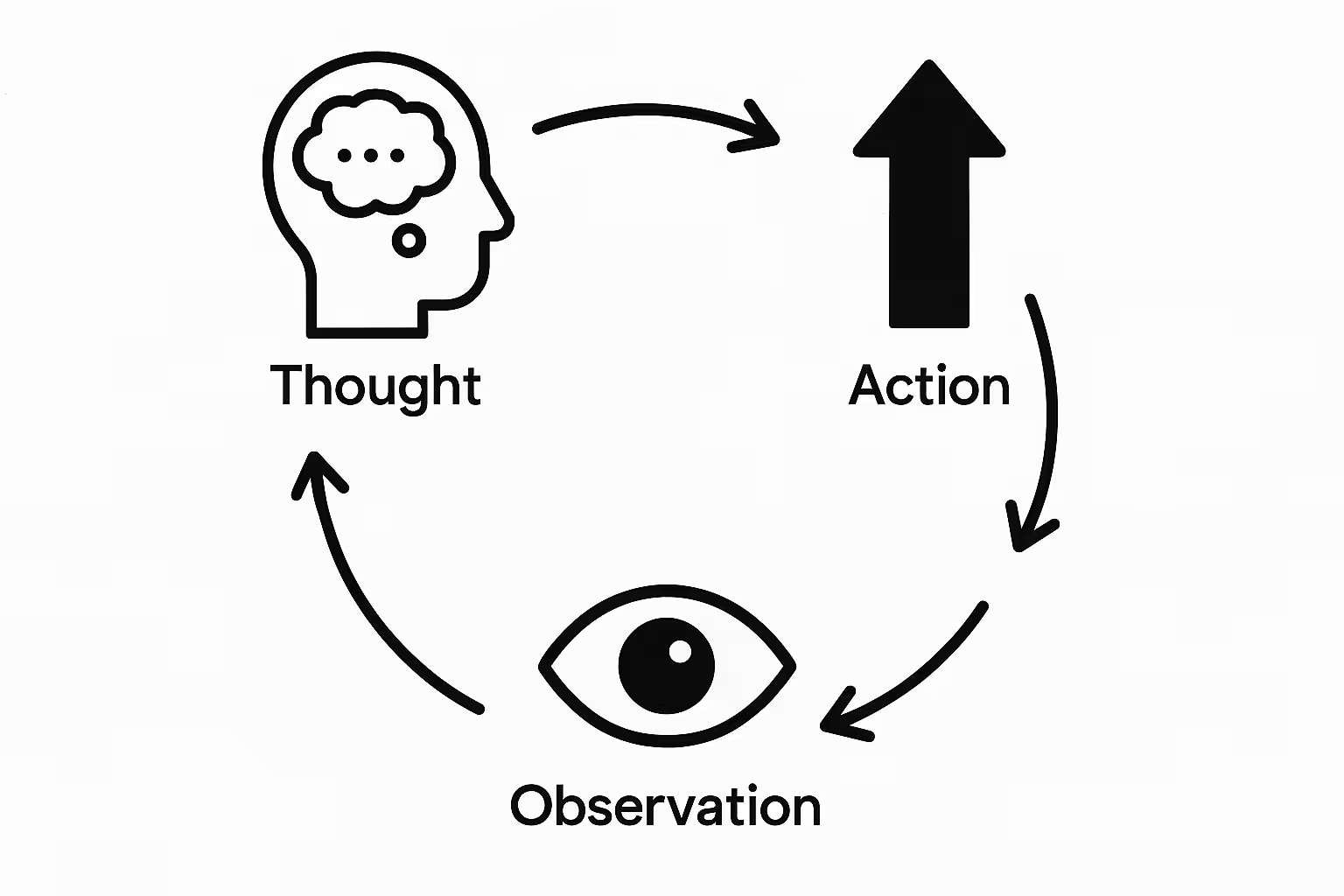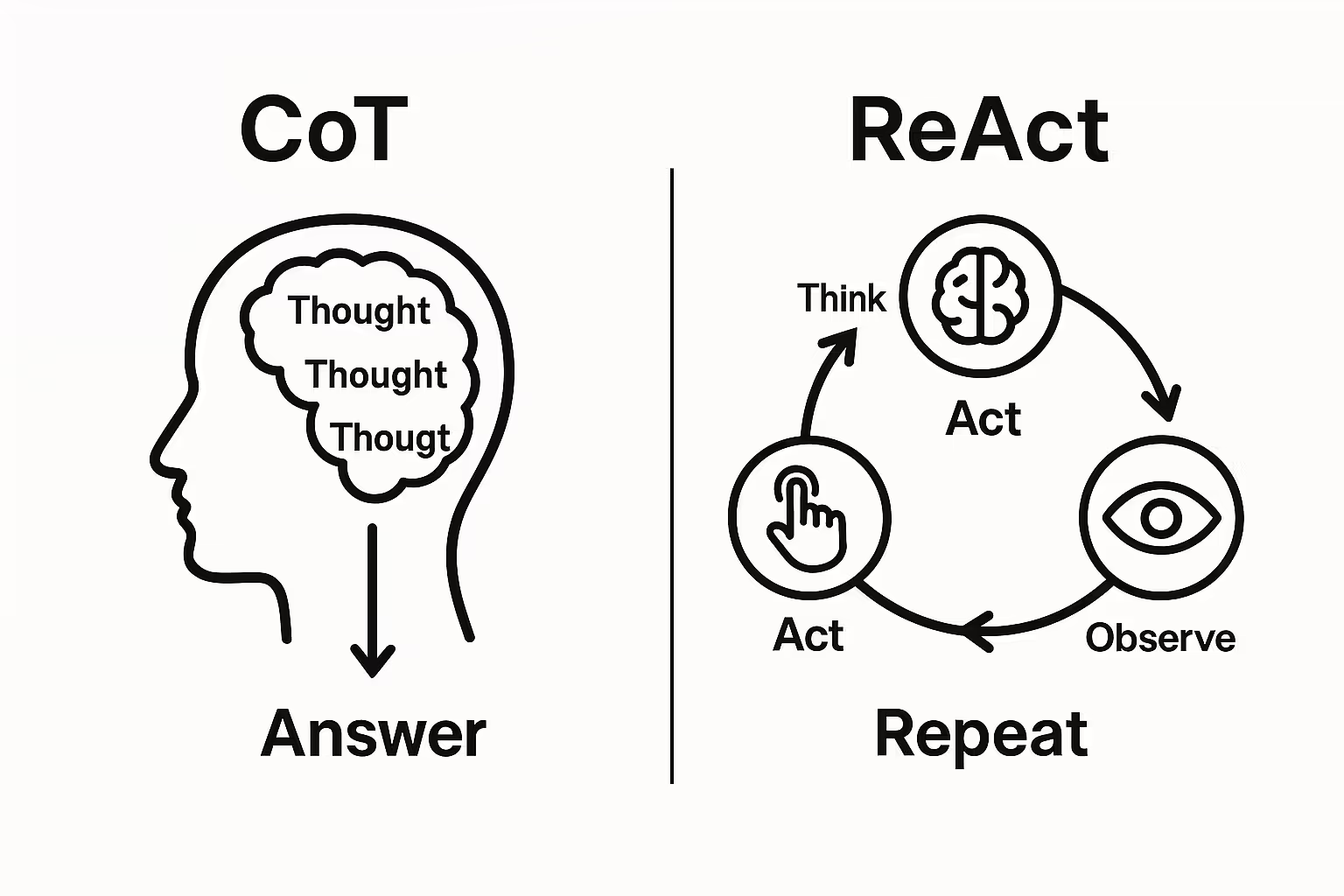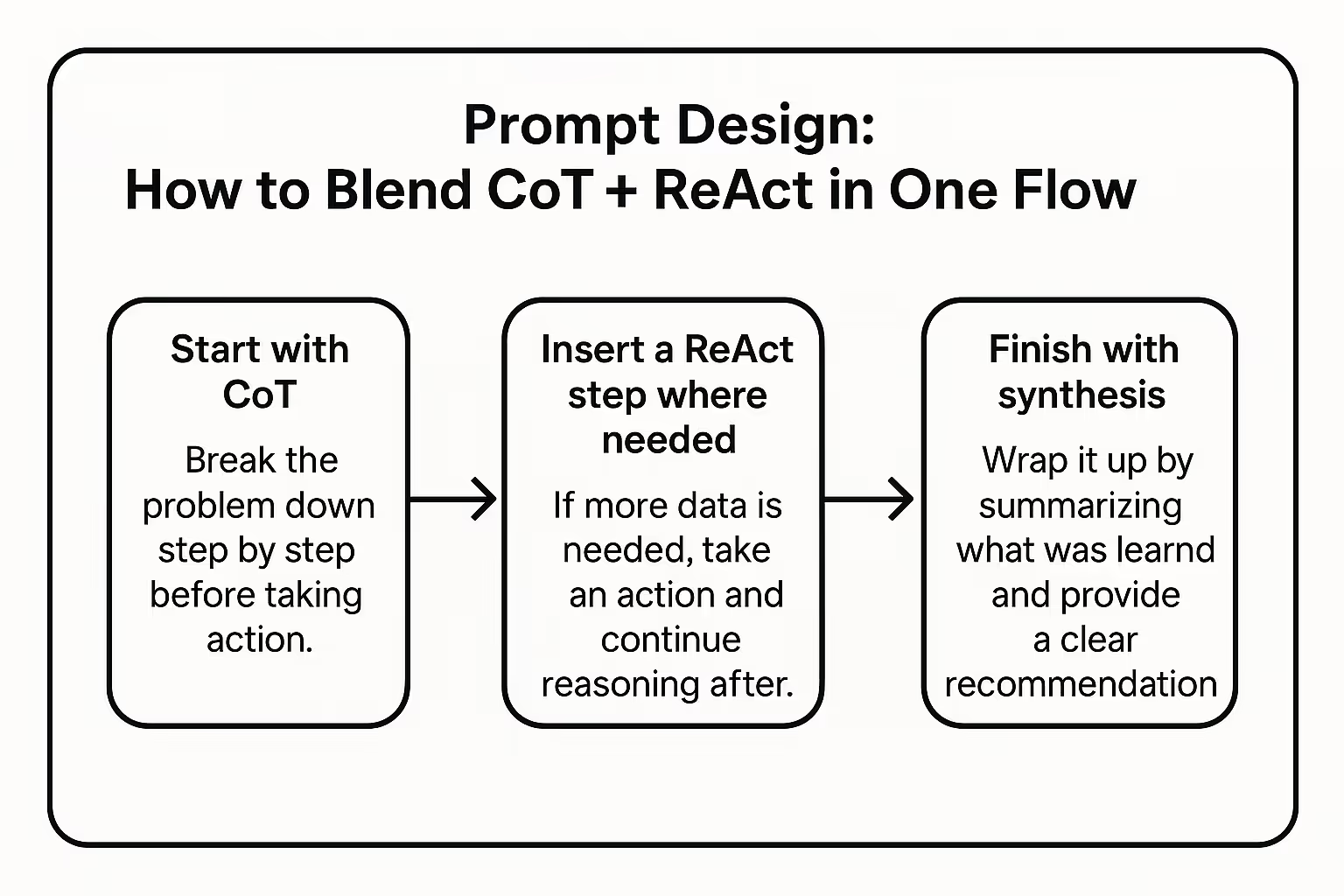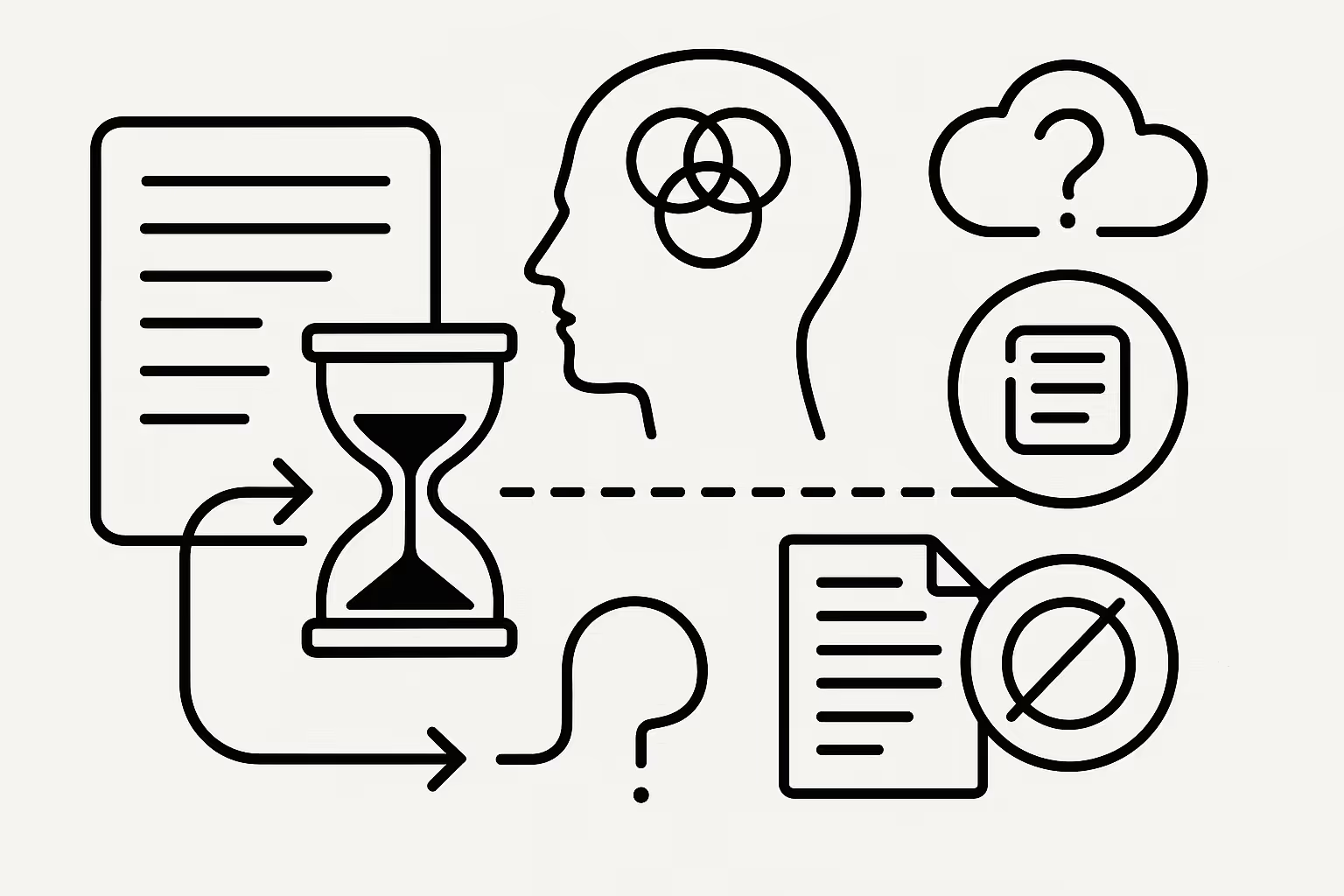
Chain of Thought helps AI think.
ReAct helps it act.
But when you combine both, you unlock something smarter — a system that can reason deeply, take real-world actions, and adjust as it goes.
In this quick guide, we’ll break down why it works, when to use it, and how to build your own hybrid prompt flow.
Let’s get into it.
ALSO READ: Whats ReAct Prompt

Chain of Thought (CoT) prompting helps AI solve problems step by step.
Instead of jumping to the answer, the model explains its logic out loud.
Great for:
• Math
• Logic puzzles
• Multi-step reasoning
• Anything that benefits from showing the thought process
But CoT is limited by what the model already knows. No internet access, no updates — just internal logic.

ReAct stands for Reasoning + Acting.
With ReAct, the model:
• Thinks through a problem (like CoT)
• Takes action (like searching or using a tool)
• Observes the result
• Adjusts based on what it finds
It’s a loop: Thought → Action → Observation → Repeat
Perfect for tasks that require external information or real-time updates.
Each has strengths:
• CoT handles logic
• ReAct handles action
When you combine them, you get:
• More accurate answers
• Less hallucination
• Smarter task execution
The model can plan with CoT, then trigger ReAct steps only when it hits a knowledge gap. That’s where the magic happens.

Here’s the key contrast:
• CoT = Think, then answer
• ReAct = Think → act → observe → repeat
CoT is internal. ReAct is interactive.
CoT works best when everything the model needs is already in its head.
ReAct steps in when it needs to look something up or use a tool.
Knowing when to switch between them is what makes combined prompting so powerful.
Let’s say you ask:
“What’s the best go-to-market strategy for launching an AI analytics tool for finance teams?”
Chain of Thought helps the model break it down:
• Define the audience
• Explore product positioning
• Suggest growth channels
But it won’t have real-time info — like competitor moves or latest market trends.
That’s where ReAct kicks in:
• Search for recent fintech product launches
• Pull examples of GTM plans from case studies
• Look up pricing models for similar tools
By combining CoT with ReAct, the AI doesn’t just think — it thinks with data.

Here’s a simple way to combine both:
1. Start with CoT
Ask the model to outline its thinking first:
“Break the problem down step by step before taking action.”
2. Insert a ReAct step where needed
When the model reaches a point where external info helps:
“If more data is needed, take an action and continue reasoning after.”
3. Finish with synthesis
Wrap it up by having the model summarize what it learned and provide a clear recommendation.
This keeps the reasoning tight and the results grounded.
Here’s a prompt example to simulate a business analyst:
<system>
You are a senior business strategist.
Goal: Build a go-to-market plan for an AI finance tool. Use internal reasoning + external data.
</system>
<user>
Product: AI-powered reporting for enterprise finance teams
Question: What’s the best go-to-market plan in Q4 2025?
Tasks:
1. Break the problem down step by step
2. Search for 3 recent competitors and their GTM strategies
3. Synthesize an answer with examples
</user>
This prompt uses CoT for planning, ReAct for data gathering, and finishes with a clear, fact-supported plan.
Best Practices for Combined Prompting
To get better results from hybrid prompts:
• Start with reasoning → don’t skip the plan
• Be clear when action is allowed (e.g., “Search”, “Lookup”)
• Keep observations short and relevant
• Return to reasoning after each action
• Limit unnecessary steps to avoid prompt bloat
Think of the AI like a smart intern: guide it, don’t overload it.
According to the original ReAct paper (Yao et al., 2022), combining ReAct + Chain of Thought improves:
• Factual accuracy
• Interpretability
• Success in complex tasks like QA and decision-making
ReAct adds structure and external info.
CoT adds logic and step clarity.
Together, they outperform either method alone — especially in business cases that require both insight and fresh data.

While powerful, CoT + ReAct can run into issues:
• Prompt length — Too many steps may hit token limits
• Over-dependence on ReAct — If the model doesn’t find good info, reasoning may stall
• Model support — Not all models can take action or interact with external tools
Best to use this combo on platforms that support tool use, search, or API integration.
Not every model can run ReAct prompts — or switch between reasoning and action.
If you’re building CoT + ReAct prompts, look for models that support:
• Tool use or API calls (e.g., code execution, search)
• Longer context windows (for step-by-step reasoning)
• Structured outputs (helps manage complex prompt flows)
Best picks in 2025:
• GPT-4o (strong at both logic and ReAct chaining)
• Claude Opus (handles long, complex task flows well)
• Gemini 1.5 Pro (good at API chaining + structured steps)
These models make hybrid prompting smoother and more consistent.
Here’s a reusable prompt structure for business analysis:
<system>
You are a business analyst with access to search tools.
Goal: Help users make strategic decisions using reasoning and live data.
</system>
<user>
Business Question: {{Insert your question}}
Tasks:
1. Break the problem into logical steps (Chain of Thought)
2. Search for recent examples, stats, or insights as needed (ReAct)
3. Return a structured, well-supported recommendation
</user>
Use this template to simulate product managers, marketers, strategists, or researchers — all in one flow.
Don’t over complicate simple tasks.
If your goal:
• Only needs a single answer
• Doesn’t require real-time data
• Has no reasoning component
… then stick with either CoT or a direct prompt.
Save hybrid prompting for multi-step, data-backed, or strategic work — where it actually adds value.
Prompting is evolving.
Chain of Thought brought structure.
ReAct added interaction.
Combining both gives you a prompt that thinks, acts, and delivers.
And that’s what separates a basic AI response from a real assistant-level answer.
If you’re working on business tasks, strategic research, or anything that needs depth and accuracy — CoT + ReAct is your best bet.





